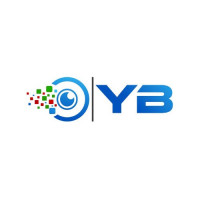5 Common Mistakes in Pharmaceutical Quality Control and How to Fix Them

Strong 8k brings an ultra-HD IPTV experience to your living room and your pocket.
Introduction
In the pharmaceutical industry, maintaining high-quality standards is not just important—it’s crucial. Pharmaceutical quality control (QC) ensures that products meet the rigorous standards set by regulatory authorities, guaranteeing patient safety and product efficacy. However, even the most diligent quality control processes can encounter issues that jeopardize these standards. Companies like YB Systems, specializing in advanced visual inspection and automated tray counting solutions, are pivotal in streamlining QC operations. But despite such innovations, common mistakes still occur.
1. Inadequate Visual Inspection
The Mistake:
One of the most frequent issues in pharmaceutical quality control is inadequate visual inspection. Human error is a significant factor, as inspectors can miss tiny defects or contaminants, especially during long shifts. Relying solely on manual inspection increases the risk of non-conformance to product specifications.
How to Fix It:
Automated visual inspection systems, like those developed by YB Systems, are key to overcoming this challenge. These systems utilize advanced imaging technology to detect even the smallest defects, ensuring consistent and reliable quality checks. By incorporating automated inspection solutions, pharmaceutical companies can reduce human error, increase inspection speed, and improve overall product quality.
Moreover, implementing regular calibration and maintenance schedules for these systems ensures that they continue to function optimally over time, reducing the chances of malfunction or oversight.
2. Poor Documentation Practices
The Mistake:
Poor documentation can lead to incomplete records, which in turn can result in regulatory non-compliance. Inadequate record-keeping, whether it's due to manual errors, missing data, or improper formats, can cause significant delays in the approval process and can even lead to product recalls.
How to Fix It:
Transitioning to electronic documentation systems is a critical step in improving documentation practices. An electronic system can automate data entry, reduce manual errors, and ensure that all records are complete and compliant with regulatory standards. Integrating these systems with your QC processes ensures a seamless flow of information.
Additionally, implementing rigorous training programs for staff on the importance of accurate documentation and the use of electronic systems can further enhance the effectiveness of your documentation practices. Regular audits of documentation processes should also be conducted to identify and rectify any gaps.
3. Inefficient Tray Counting Systems
The Mistake:
Manual tray counting processes in pharmaceutical manufacturing are prone to errors, leading to miscounts, delays, and potentially compromised batch integrity. An inefficient counting system can result in production bottlenecks and increased labor costs due to rechecks and corrections.
How to Fix It:
Automated tray counting solutions, like those offered by YB Systems, provide a reliable and efficient alternative to manual counting. These systems are designed to count trays accurately and quickly, minimizing the risk of errors and improving production efficiency. Automated systems can also integrate with other production processes, creating a streamlined workflow that reduces the chances of bottlenecks.
Regular training for operators on using these systems, combined with consistent performance monitoring, ensures that your tray counting process remains efficient and accurate.
4. Lack of Proper Calibration and Maintenance
The Mistake:
Calibration and maintenance are critical to the accuracy and reliability of quality control equipment. Neglecting these essential tasks can lead to equipment malfunctions, inaccurate readings, and potentially faulty products reaching the market. This is especially dangerous in pharmaceutical manufacturing, where precise measurements are critical.
How to Fix It:
Establish a strict calibration and maintenance schedule for all QC equipment, from visual inspection systems to tray counters. These schedules should be based on manufacturer recommendations and include regular performance checks. Additionally, maintaining a detailed log of all calibration and maintenance activities ensures that your processes remain transparent and compliant with regulatory standards.
Outsourcing equipment maintenance to specialized service providers can also be beneficial, as it ensures that your equipment is maintained by experts who are up-to-date with the latest industry standards.
5. Inadequate Staff Training
The Mistake:
Even with the most advanced QC systems in place, if staff are not adequately trained, mistakes are inevitable. Lack of proper training can lead to incorrect use of equipment, improper documentation, and poor decision-making, all of which can compromise product quality.
How to Fix It:
Investing in continuous staff training programs is essential to ensuring that your QC processes run smoothly. Training should cover not only the operation of QC equipment but also the importance of compliance with industry standards and the role of quality control in ensuring patient safety. Offering refresher courses and upskilling opportunities for staff helps to maintain high levels of competency.
In addition, fostering a culture of quality within the organization, where all employees understand the importance of their role in maintaining product standards, can significantly reduce the occurrence of QC-related mistakes.
Conclusion
Pharmaceutical quality control is an intricate process that requires precision, attention to detail, and a proactive approach to problem-solving. By addressing these five common mistakes—whether through automation, improved documentation, regular maintenance, or enhanced training—you can significantly enhance the reliability and efficiency of your QC operations.
Advanced solutions like YB Systems' visual inspection and automated tray counting systems provide the technological edge needed to stay ahead in this competitive industry. By adopting these solutions and maintaining rigorous quality control standards, pharmaceutical manufacturers can ensure that their products consistently meet the highest standards of safety and efficacy.
Note: IndiBlogHub features both user-submitted and editorial content. We do not verify third-party contributions. Read our Disclaimer and Privacy Policyfor details.


